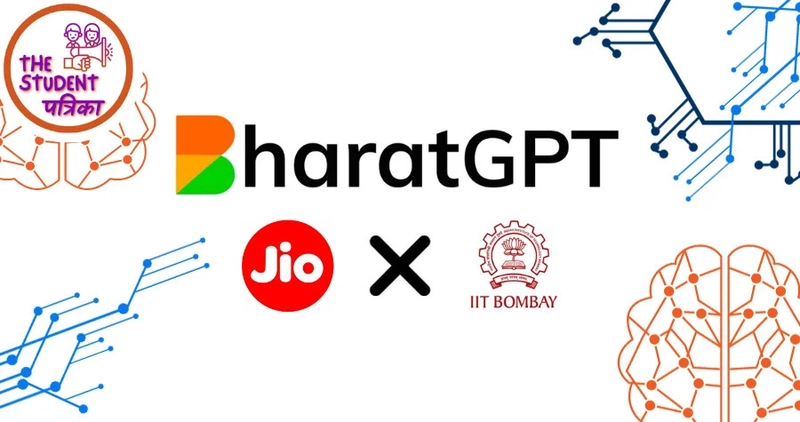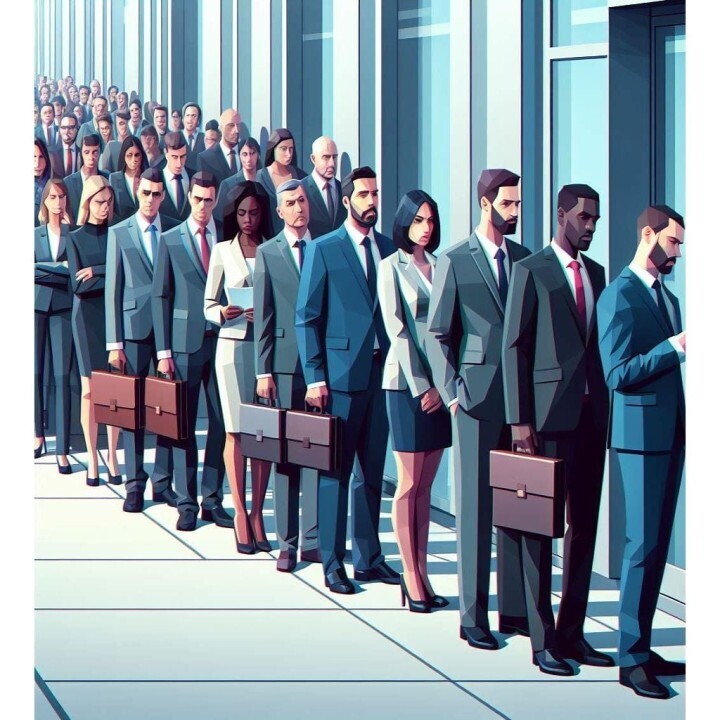The Looming AI Winter 2.0
How Tech Giants Like Google Are Fueling a New Crisis Introduction: The Silent Battle for Tomorrow Imagine a world where innovation dazzles and disrupts, yet beneath the surface, a silent arms race unfolds — a battle not of nations, but of ideas and ambition. In 2023, while the world celebrated ChatGPT’s meteoric rise, a covert struggle simmered among tech titans. Google, once the unchallenged monarch of search and invention, began to falter as Microsoft-backed OpenAI and agile startups like Perplexity AI redrew the rulebook. But this isn’t merely a contest of corporate muscle; it is the prelude to an AI Winter 2.0 — a looming era of stagnation sparked by corporate self-interest, stifling regulation, and a seismic shift in the job market that threatens to reshape society. Chapter 1: The Fall of an Empire Once upon a time, Google reigned supreme — a guardian of the web and the quiet innovator behind revolutionary tech. Rumor had it that Google had developed its own formidable AI model (the precursor to what we now know as Gemini) two years before ChatGPT burst onto the scene. Yet, overwhelmed by security concerns and a complacency born of past glories, the project was quietly shelved. By 2022, the world witnessed a new era as OpenAI’s ChatGPT, powered by Microsoft’s expansive Azure cloud, turned search into a dynamic conversation. In a matter of months, Google’s empire — built on traditional search — began to show deep, worrying cracks. Meanwhile, nimble startups like Perplexity AI emerged, blending real-time data with intelligent insights to challenge a monopoly that had long seemed invincible. The lesson here? In a digital age defined by rapid evolution, even giants can stumble when they fail to adapt. Chapter 2: The Diamond Paradox — Value in the Age of Abundance Picture a world where value is not derived from scarcity, but rather from the abundance and diversity of options. Much like the De Beers cartel once manipulated diamond supply to create an aura of exclusivity, today’s tech giants are grappling with a similar paradox. The Synthetic Surge: Open-source models such as Meta’s Llama and Mistral, along with country-specific AIs like India’s BharatGPT and the UAE’s Falcon, are democratizing technology at breakneck speed. As more players join the fray, the traditional power held by centralized, high-cost models begins to erode, much like diamonds losing their luster in a flood of synthetics. A Counteroffensive: In response, Google and its peers have turned to regulation as their shield — lobbying for stricter rules like the EU AI Act. Framing AI as an “existential risk,” they aim to raise barriers to entry. But history warns us: excessive regulation can stifle the very innovation it seeks to control, reminiscent of the tech freeze during the 1980s AI Winter. In this narrative, the diamond is not merely a symbol of wealth, but a metaphor for how value is redefined in an era of democratized technology. Chapter 3: The Shifting Sands of Work and Expertise The Fall of the White-Collar Bastions The allure of high-skilled work — coding, legal analysis, radiology — has always promised prestige and stability. Yet, AI’s uncanny ability to recognize patterns and deliver rapid solutions is upending this expectation. A 2023 OECD report warned that 30% of high-skilled jobs could be automated by 2030. In healthcare, for instance, a groundbreaking study revealed that AI-human teams could diagnose breast cancer with 95% accuracy — a stark improvement over AI working alone. As junior roles shrink and expertise becomes a luxury, society may soon find itself divided into two tiers: one where humans handle the complex and the other where machines manage the routine. The Rise of the Unskilled Savior In this brave new world, roles once dismissed as “unskilled” are emerging as society’s linchpin: The Practical Pioneers: As AI encroaches on white-collar domains, the very tasks that require a human touch — fixing a burst pipe, repairing intricate machinery — become indispensable. According to projections by the U.S. Bureau of Labor Statistics, trade jobs like those of plumbers and electricians could see 10% growth by 2032. Care in the Age of Machines: In a landscape where AI lacks empathy, the value of human connection in caregiving — nurses, therapists, and hospice workers — will soar. Chapter 4: Charting a Course Away from Winter Every crisis carries the seeds of opportunity. To avert the looming AI Winter, we must reimagine our path forward: Reskilling for the Real World: Governments and institutions must pivot from a narrow focus on coding bootcamps to broader vocational training. Consider Germany’s apprenticeship model, where half of the youth learn trades like carpentry or electrical work — a blueprint for sustainable progress. Reining in Monopolies, Not Innovation: It’s essential to dismantle the monopolistic grip on AI infrastructure

How Tech Giants Like Google Are Fueling a New Crisis
Introduction: The Silent Battle for Tomorrow
Imagine a world where innovation dazzles and disrupts, yet beneath the surface, a silent arms race unfolds — a battle not of nations, but of ideas and ambition. In 2023, while the world celebrated ChatGPT’s meteoric rise, a covert struggle simmered among tech titans. Google, once the unchallenged monarch of search and invention, began to falter as Microsoft-backed OpenAI and agile startups like Perplexity AI redrew the rulebook. But this isn’t merely a contest of corporate muscle; it is the prelude to an AI Winter 2.0 — a looming era of stagnation sparked by corporate self-interest, stifling regulation, and a seismic shift in the job market that threatens to reshape society.
Chapter 1: The Fall of an Empire
Once upon a time, Google reigned supreme — a guardian of the web and the quiet innovator behind revolutionary tech. Rumor had it that Google had developed its own formidable AI model (the precursor to what we now know as Gemini) two years before ChatGPT burst onto the scene. Yet, overwhelmed by security concerns and a complacency born of past glories, the project was quietly shelved. By 2022, the world witnessed a new era as OpenAI’s ChatGPT, powered by Microsoft’s expansive Azure cloud, turned search into a dynamic conversation. In a matter of months, Google’s empire — built on traditional search — began to show deep, worrying cracks. Meanwhile, nimble startups like Perplexity AI emerged, blending real-time data with intelligent insights to challenge a monopoly that had long seemed invincible.
The lesson here? In a digital age defined by rapid evolution, even giants can stumble when they fail to adapt.
Chapter 2: The Diamond Paradox — Value in the Age of Abundance
Picture a world where value is not derived from scarcity, but rather from the abundance and diversity of options. Much like the De Beers cartel once manipulated diamond supply to create an aura of exclusivity, today’s tech giants are grappling with a similar paradox.
- The Synthetic Surge: Open-source models such as Meta’s Llama and Mistral, along with country-specific AIs like India’s BharatGPT and the UAE’s Falcon, are democratizing technology at breakneck speed. As more players join the fray, the traditional power held by centralized, high-cost models begins to erode, much like diamonds losing their luster in a flood of synthetics.
- A Counteroffensive: In response, Google and its peers have turned to regulation as their shield — lobbying for stricter rules like the EU AI Act. Framing AI as an “existential risk,” they aim to raise barriers to entry. But history warns us: excessive regulation can stifle the very innovation it seeks to control, reminiscent of the tech freeze during the 1980s AI Winter.
In this narrative, the diamond is not merely a symbol of wealth, but a metaphor for how value is redefined in an era of democratized technology.
Chapter 3: The Shifting Sands of Work and Expertise
The Fall of the White-Collar Bastions
The allure of high-skilled work — coding, legal analysis, radiology — has always promised prestige and stability. Yet, AI’s uncanny ability to recognize patterns and deliver rapid solutions is upending this expectation. A 2023 OECD report warned that 30% of high-skilled jobs could be automated by 2030. In healthcare, for instance, a groundbreaking study revealed that AI-human teams could diagnose breast cancer with 95% accuracy — a stark improvement over AI working alone.
As junior roles shrink and expertise becomes a luxury, society may soon find itself divided into two tiers: one where humans handle the complex and the other where machines manage the routine.
The Rise of the Unskilled Savior
In this brave new world, roles once dismissed as “unskilled” are emerging as society’s linchpin:
- The Practical Pioneers: As AI encroaches on white-collar domains, the very tasks that require a human touch — fixing a burst pipe, repairing intricate machinery — become indispensable. According to projections by the U.S. Bureau of Labor Statistics, trade jobs like those of plumbers and electricians could see 10% growth by 2032.
- Care in the Age of Machines: In a landscape where AI lacks empathy, the value of human connection in caregiving — nurses, therapists, and hospice workers — will soar.
Chapter 4: Charting a Course Away from Winter
Every crisis carries the seeds of opportunity. To avert the looming AI Winter, we must reimagine our path forward:
- Reskilling for the Real World: Governments and institutions must pivot from a narrow focus on coding bootcamps to broader vocational training. Consider Germany’s apprenticeship model, where half of the youth learn trades like carpentry or electrical work — a blueprint for sustainable progress.
- Reining in Monopolies, Not Innovation: It’s essential to dismantle the monopolistic grip on AI infrastructure. Breaking Big Tech’s stranglehold will not only prevent artificial scarcity but also promote a more level playing field for innovation.
- Embracing the Wisdom of the Ages: As echoed in the ancient wisdom of the Bhagavad Gita, where the interplay of nature’s forces reminds us of our interconnectedness, our future depends on systemic support — be it through education, mentorship, or the unpredictable winds of luck. Success, whether in technology or life, is rarely about individual hustle; it is about the collective spirit that propels us forward.
Conclusion: An Invitation to Curiosity and Action
The saga of AI is not preordained; it is a narrative that we shape with every decision we make. The impending AI Winter 2.0 stands as a crossroads — a choice between allowing monopolies to dictate our future or democratizing technology to empower billions. As white-collar roles vanish into the digital ether, the once-overlooked trades may emerge as the true architects of tomorrow’s society.
“Forget the hype. The real AI crisis isn’t machines taking over — it’s humans forgetting the value of hands that build and hearts that care.”
In this unfolding story, every reader is invited to question, to learn, and to take action. Stay awake. Stay curious. The future is yours to write.
Sources:
- Global HIV/AIDS Statistics: UNAIDS
- U=U (Undetectable = Untransmutable): Prevention Access Campaign CDC
- Global Health Funding: The Global Fund
- Dr. Fauci Quote: NIH
- Google’s AI Missteps: The Verge (2023) TechCrunch (2024)
- Android Ecosystem Vulnerabilities: Reuters (2023)
- Cloud Market Share: Statista (2024)
- Diamond Cartel Analogy: The Atlantic (2018)
- 1980s AI Winter: MIT Technology Review (2020)
- AI in Healthcare: Lancet Digital Health NIH Study
- Trade Job Growth: U.S. Bureau of Labor Statistics (2023)
- Germany’s Apprenticeship Model: OECD (2022)
- AI Winter History: Stanford’s AI Index Report (2024)
Notes:
For studies (e.g., NEJM 2023 study on U=U, Lancet diagnostics), visit the journal websites and search with keywords like ‘AI diagnosis accuracy’ to find direct links. Replace generic links (e.g., NIH, OECD) with specific reports if required.












































































































































































![[The AI Show Episode 142]: ChatGPT’s New Image Generator, Studio Ghibli Craze and Backlash, Gemini 2.5, OpenAI Academy, 4o Updates, Vibe Marketing & xAI Acquires X](https://www.marketingaiinstitute.com/hubfs/ep%20142%20cover.png)




























































































































![[DEALS] The Premium Learn to Code Certification Bundle (97% off) & Other Deals Up To 98% Off – Offers End Soon!](https://www.javacodegeeks.com/wp-content/uploads/2012/12/jcg-logo.jpg)

![From drop-out to software architect with Jason Lengstorf [Podcast #167]](https://cdn.hashnode.com/res/hashnode/image/upload/v1743796461357/f3d19cd7-e6f5-4d7c-8bfc-eb974bc8da68.png?#)








































































































.png?#)


































_Christophe_Coat_Alamy.jpg?#)


.webp?#)





































































































![Apple Considers Delaying Smart Home Hub Until 2026 [Gurman]](https://www.iclarified.com/images/news/96946/96946/96946-640.jpg)
![iPhone 17 Pro Won't Feature Two-Toned Back [Gurman]](https://www.iclarified.com/images/news/96944/96944/96944-640.jpg)
![Tariffs Threaten Apple's $999 iPhone Price Point in the U.S. [Gurman]](https://www.iclarified.com/images/news/96943/96943/96943-640.jpg)









































































































































